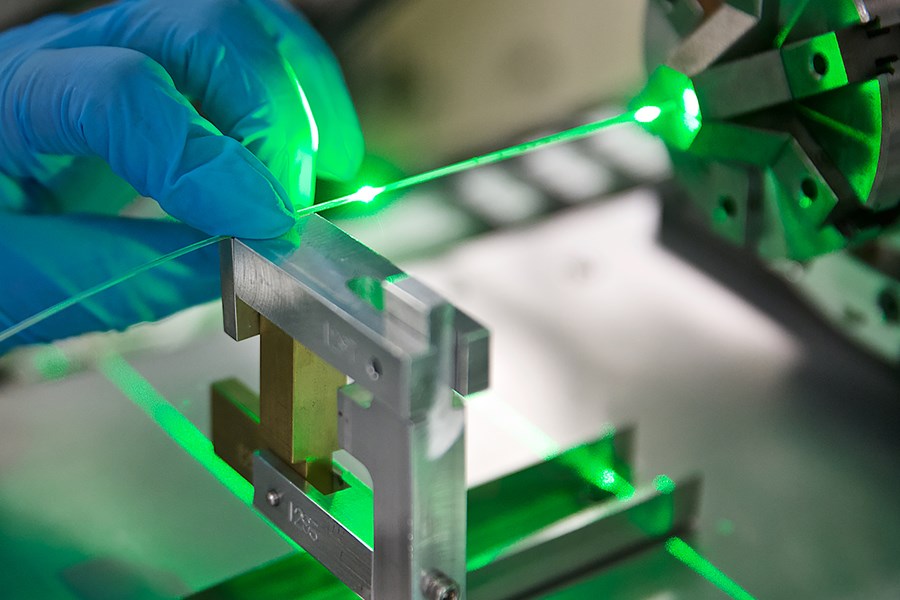Ultra-Fast Lasers
Ultra-fast lasers are in high demand because of their speed and precision—they can cut features as small as 0.0005 inches (13 microns) with high accuracy and no thermal damage.

Ultra-Fast Lasers
Ultra-fast lasers are in high demand because of their speed and precision—they can cut features as small as 0.0005 inches (13 microns) with high accuracy and no thermal damage.

Ultra-fast lasers are in high demand because of their speed, precision, and lack of thermal or structural damage to the material being processed. With an average pulse width of 150 femtoseconds (150 quadrillionths of 1 second), there is virtual no heat transfer beyond the dimensions of the cut, making it a “cool” process. As a result, secondary processing is typically not required to clear burrs from cut features or enhance edge quality, saving time and cost.
Virtually any type of solid material can be processed with ultra-fast lasers, including layered, mixed, laminated, or coated materials. Features as small as 0.0005 inches (13 microns) can be laser-cut with submicron tolerances. These can be micro-textured patterns or lattice structures on part surfaces that enhance performance.
Achieving optimal laser processing results is dependent on matching the proper laser pulse width and wavelength with the material to be processed. Material chemistry, thickness, precision, intended use, and price considerations all factor into this decision process. The first consideration for matching the right laser is understanding the wavelength requirement. Different materials absorb and reflect different amounts of light, according to the chemical properties of the material and the wavelength of the light. The greater the amount of energy absorbed by the material from a particular laser wavelength, the easier and more accurate the laser processing will be.
Pulse width (PW) is the elapsed time between the beginning and the end of a single pulse of energy, measured in seconds. The shorter the pulse width, the greater the effectiveness of the cut, with fewer burrs or defects, such as heat-affected zones. Ultra-fast photons strip electrons of the atoms in the material, ionizing the atoms and forcing them to explode out of the bulk material, with virtually no heat transfer.
Pulse width defines the three fastest industrial lasers for micromachining:
Customers appreciate the fast set-up and processing ultra-fast lasers provide, as well as:
Ultra-fast laser micromachining is a non-contact technology that makes highly accurate and repeatable components and features, with minimal or no thermal damage to the materials being processed. Rapid processing and the elimination of secondary finishing save time, reduce costs, and gets products to market faster.